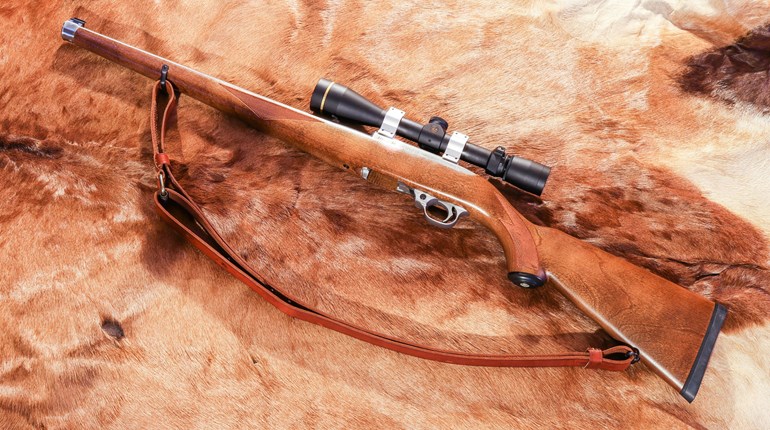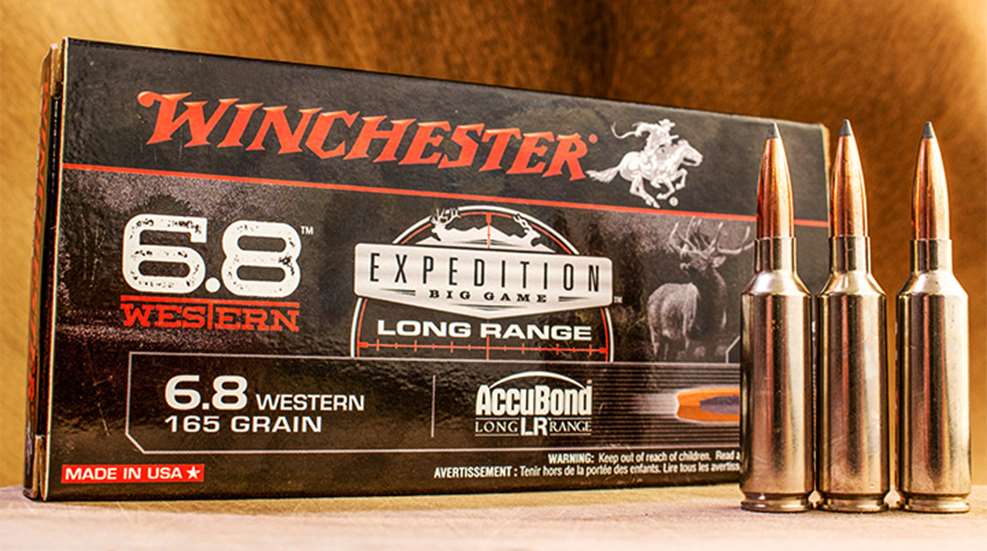
The majority of our modern cartridges have been innovative designs; that’s no easy feat considering how many of our early designs seem to have gotten it right the first time around. With the recent interest in both long-range shooting, as well as long-range hunting, we are seeing quite a few interesting designs taking advantage of the higher Ballistic Coefficient bullets of heavier weights through faster twist-rate barrels. Some are running at higher velocities, like the .26, .27 and .28 Nosler, 6.5-300 Weatherby Magnum and 6.5 PRC, some are more moderate like the 6.5 Weatherby RPM.
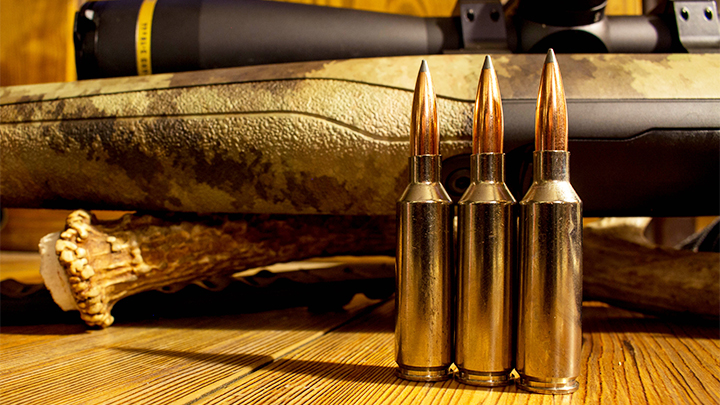
Winchester and Browning have collaborated to produce the 6.8 Western, a new take on the concept of the .270 Winchester Short Magnum, using those heavier bullets and a faster twist rate than the previous iterations of the Winchester cartridges have used. Though it’s called a 6.8, it is a .277-inch bore diameter, and is Winchester’s first metric cartridge. Since its release, I’ve heard folks put the new design down, saying it’s nothing more than a repackaging of the .270 WSM; but nothing could be further from the truth. The 6.8 Western picks up where the .270 WSM leaves off, and delivers a whole lot more.
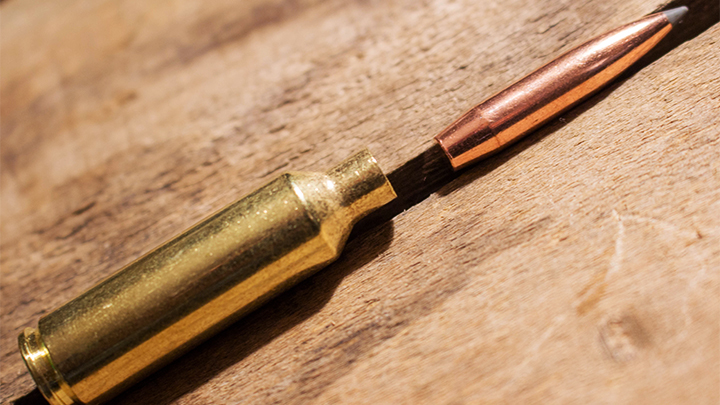
It does share the same base diameter as the .270 WSM—0.535 inches, the same as the H&H belted magnum family—and the 35-degree shoulder of its sibling, though the datum line and case length have been shortened slightly. Where the .270 WSM uses a case length of 2.100 inches, the 6.8 Western’s case measures 2.020 inches, and the shoulder is set back 0.081 inches, though the overall lengths of the cartridges are the same, in order to allow the 6.8 Western to use those bullets with the longer ogives. The factory loads for the 6.8 Western use bullets weighing 165, 170, and 175 grains; much longer than those traditionally used by the other .270s. As a result, Winchester and Browning rifles are equipped with a 1:8” and 1:7.5” twist, respectively, giving a new depth to the .270 bore. Though there have been heavy-for-caliber .270 bullets in the past—including the Berger Extreme Outer Limits Elite Hunter 170-grain bullet—they were usually reserved for the custom rifles, or at least those rifles with a replacement barrel with the faster twist rate.
Though the 6.8 Western lacks the ‘magnum’ moniker in its name, it shows the magnum roots in its performance level. It’ll drive the Winchester Expedition Long Range 165-grain Nosler AccuBond LR bonded-core bullet to a muzzle velocity of 2970 fps, giving a trajectory and wind drift values on par with the .300 Winchester Magnum and a good 180-grain bullet. The Winchester 170-grain Ballistic Silvertip leaves the muzzle at 2920 fps, and will make a great choice for any deer, anywhere, from Coues deer in the desert to the bruiser whitetails of Saskatchewan, giving the rapid expansion and quick energy transfer which works so well for those species.
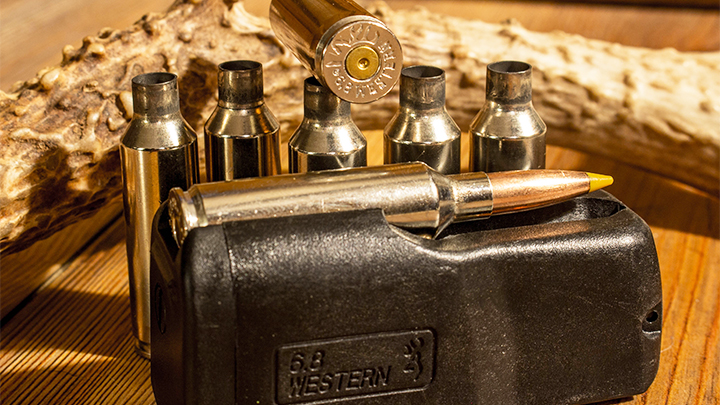
The Browning Long Range Pro Hunter, featuring the 175-grain Sierra Tipped GameKing at a muzzle velocity of 2830 fps, gives all sorts of penetration at all ranges. The hook is the 6.8 Western does that with a serious reduction in recoil. I’ve spent some time with the Winchester XPR in 6.8 Western on a mule deer/elk combination hunt in Colorado, and with a Browning X-Bolt—which I adopted—at the shooting range. Both rifles shot very well, and both rifles offered similar levels of recoil; the Browning has a removable muzzle brake which takes the recoil level even lower. Undoubtedly, the 6.8 Western gives a performance level much higher than its recoil level, and the high Sectional Density of those 165- and 175-grain hunting bullets (the Nosler AccuBond at 0.307 and Sierra Tipped GameKing at 0.326, respectively) simply enhance the capabilities of the .277-inch bore diameter.
I used the 6.8 Western to absolutely flatten a big-bodied mule deer buck at just over 200 yards, as well as sorting out a spike elk at just over 100 yards. On that Colorado hunt, animals were taken at ranges of 75 yards all the way out to 475 yards, and only one bullet could be recovered; it was a closer shot, yet the bonded core construction of the Nosler ABLR handled all the shots without issue.
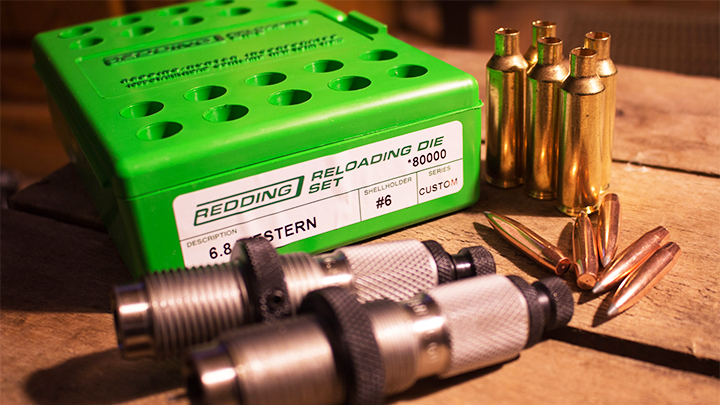
At the range, both the Winchester and Browning factory loads gave sub-MOA accuracy, with the Winchester load printing the tighter of the two choices. Though it is relatively new, with just a couple of choices for hunters, I feel this duo can cover an awful lot of ground, from elk and moose out to sane distances, to the largest black bears and hogs inside of 100 yards, to any deer, anywhere. Should you want to further extend the capabilities of the 6.8 Western, there is good data available in order to handload the commonplace 130-, 140-, and 150-grain bullets used for the .270 Winchester, .270 Weatherby Magnum and .270 WSM. Look to a good large rifle magnum primer—I like the Federal Gold Medal Match GM215M—and powders on the slower end of the burn rate, like IMR4350 all the way up to IMR7977, IMR8133 and RETUMBO.
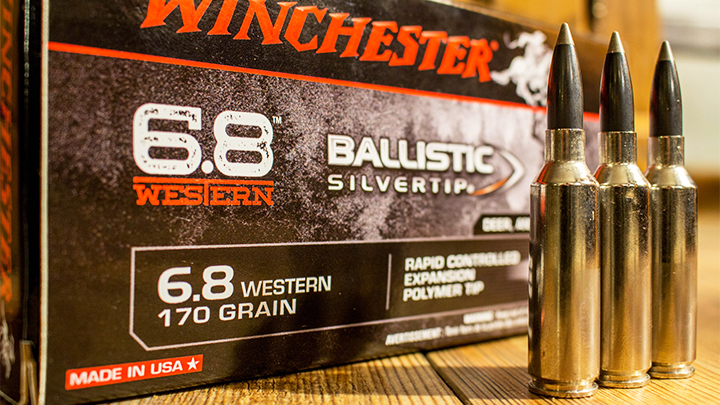
So, at the end of the day, the 6.8 Western offers the capability of using bullets weighing between 130 and 175 grains, all at respectable velocities, at totally manageable recoil levels, without generating enough steam to cause premature throat erosion and diminish barrel life. For the hunter who spends the majority of his or her time in the whitetail woods, it may not offer much of an advantage over the time-honored .270 Winchester, but for the hunter who intends to pursue a wide variety of game, it is a very flexible cartridge, worthy of considering as an all-around choice. It truly checks the majority of the boxes for the North American species and African plains game, and will pair well with a .375 H&H or one of the .416s for the larger species. Of all the new cartridge developments released in the last decade, I feel the 6.8 Western is one of the most well-balanced.
Looking for previous installments of our "Behind the Bullet" series? We've got you covered.
• .375 Ruger
• .223 Remington
• 6.5x55 Swedish
• .416 Remington Magnum
• .300 Winchester Short Magnum
• 28 Nosler
• 6.5 PRC
• .22 WMR
• .458 Winchester Magnum
• .22 Hornet
• .280 Ackley Improved
• .240 Weatherby Magnum
• .458 Lott
• .264 Winchester Magnum
• .348 Winchester
• .33 Nosler
• .260 Remington
• .30-30 Winchester
• .416 Rigby
• .358 Norma Magnum
• .22 LR
• 7mm-08 Remington
• 8mm Remington Magnum
• .338 Federal
• .224 Valkyrie
• .338-06 A-Square
• 9.3x62mm Mauser
• .257 Weatherby Magnum
• .45-70 Government
• .300 H&H Magnum
• .25-06 Remington
• .30-06 Springfield
• 6.5 Creedmoor
• .300 Remington Ultra Magnum
• 7mm Remington Magnum
• .470 Nitro Express
• .280 Remington
• .300 Winchester Magnum
• .270 Winchester
• .222 Remington
• .45 ACP
• .404 Jeffery
• .44 Remington Magnum
• .41 Remington Magnum
• .243 Winchester
• .338 Winchester Magnum
• .357 S&W Magnum
• 6.5-284 Norma
• 8x57 Mauser
• .38 Smith & Wesson Special
• 7x57mm Mauser
• 9mm Luger
• .35 Whelen
• .454 Casull
• .375 H&H Magnum
• .45 Colt
• .22-250 Remington
• 10mm Auto
• .308 Winchester















